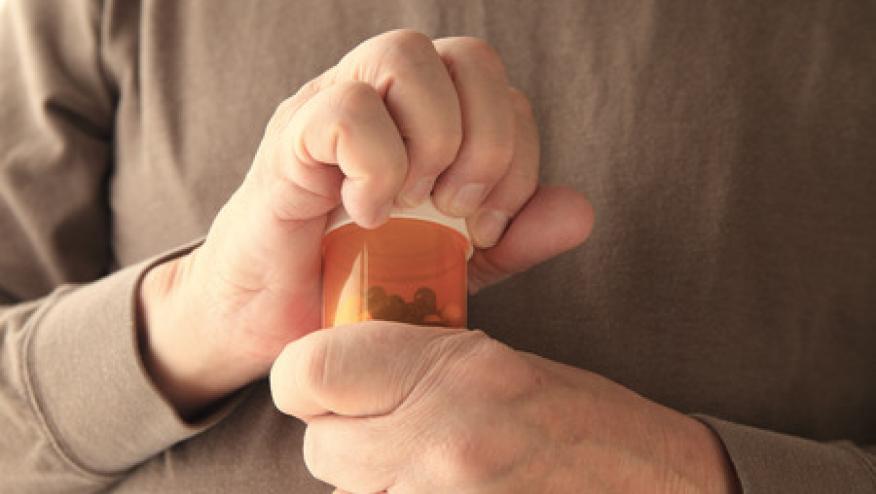Diet and Osteoarthritis Pain Save

Knee osteoarthritis (OA) pain was worse with a pro-inflammatory diet, an observational study suggested.
Scores on a proprietary "Dietary Inflammatory Index" (DII) were significantly associated with standard knee pain scores among patients over nearly 11 years of follow-up (β=0.21, 95% CI 0.004-0.43), according to Feng Pan, MBBS, MMed, PhD, of the University of Tasmania in Hobart, Australia, and colleagues.
Patients with high DII scores were also significantly more likely to have pain levels classed as moderate as opposed to minimal (relative risk ratio 1.19, 95% CI 1.02-1.39), the group reported in Arthritis Care & Research.
But, the researchers added, "inconsistent findings related to structural changes suggest a discordance between the potential impact of diet on structural damage and pain." Neither changes in knee cartilage volume nor the overall growth of bone marrow lesions were associated with DII values; moreover, higher DII scores were actually associated with reduced risk of growth in medial tibial lesions.
Pan and colleagues suggested that a pro-inflammatory diet may be more important as a driver of systemic inflammation with less impact on structures within the knee joint.
Researchers around the world have long wondered whether diet could play a role in OA development and progression. Some food patterns have previously been found to increase systemic inflammation, particularly those that distinguish the so-called Western diet -- high intake of fatty meat and dairy products and ultraprocessed grains but little fresh fruits and vegetables -- from others considered healthier. One of the current study's authors, James Hébert, PhD, of the University of South Carolina in Columbia, has been pursuing this line of research for more than a decade, developing the DII and showing that it associates with C-reactive protein levels, cardiovascular disease, and musculoskeletal dysfunction.
The new study is the latest extension of this program. As in earlier phases, it drew on data from a long-running, population-based cohort in the Australian state of Tasmania that enrolled people ages 50-80 from 2002 to 2004 and then followed them for up to 10.7 years. For the current analysis, Pan and colleagues examined 944 cohort members with complete DII scores, among whom 566 were retained for the full 10.7 years. Patients returned to the clinic three times following the baseline visit.
Mean age at baseline was 62.9, and participants' BMI averaged 27.9. Pain was evaluated periodically with the Western Ontario McMaster Universities Osteoarthritis Index (WOMAC) instrument. In addition to the continuous numerical values that the WOMAC index provides, pain levels were also categorized into "minimal," "mild," and "moderate." Some 60% of participants had radiographically confirmed knee OA at enrollment. Notably, radiographic data were not obtained at the final visit after 10.7 years, so cases that developed following the second post-baseline visit were not captured.
DII scores were derived from food frequency questionnaires that participants completed at baseline. The average score at that point, after adjusting for caloric content, was -0.5. Scores may range as high as 8 (maximal inflammatory potential) and as low as -9, putting the Tasmanian cohort nearly in the middle. (The actual range in this study was -3.80 to 3.23.) Although earlier studies included levels of up to 45 different nutrients (including alcohol) in calculating DII scores, the new analysis used only 19, presumably because the questionnaires used in the cohort were not as detailed.
The lack of correlation between DII and cartilage volume or bone marrow lesion growth was perplexing, Pan and colleagues indicated. They noted that two earlier cross-sectional studies had found an association, "and a 48-month follow-up study show[ed] DII scores related to incident [radiographic] OA."
"The discrepancies between our study and the cross-sectional studies," Pan's group suggested, "may be due to differences in participants' characteristics, knee structure assessment, and study design and/or variations in the follow-up period." The researchers pointed out that the Tasmanian cohort comprised unselected community-dwelling adults, whereas the other studies involved individuals who "either had or were at increased risk of developing knee OA."
Besides the limitations noted above, Pan and colleagues noted that their data didn't indicate whether participants were taking medications for pain or other problems; such treatments could have affected the results.
Source Reference: Ma C, et al "Dietary inflammatory index and MRI-detected knee structural change and pain: a 10.7-year follow-up study" Arthritis Care Res 2024; DOI: 10.1002/acr.25307.








If you are a health practitioner, you may Login/Register to comment.
Due to the nature of these comment forums, only health practitioners are allowed to comment at this time.